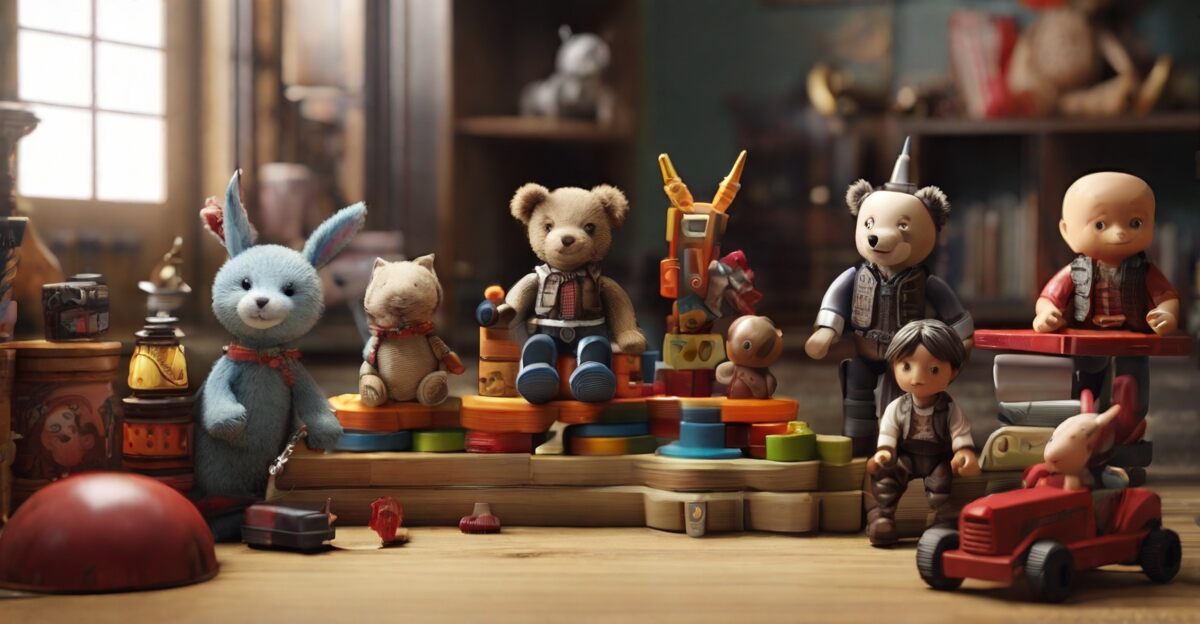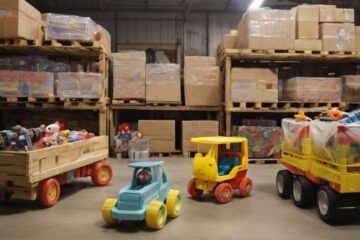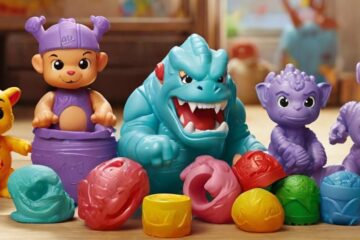How often to do toy rotation? is a question that many parents and educators ask. Toy rotation is a concept that has gained popularity for its numerous benefits. This article aims to provide a comprehensive answer to this question.
What Is Toy Rotation?
Before we delve into the frequency of toy rotation, it’s important to understand what it is. Toy rotation is the process of rotating the toys available to your child for play. Instead of giving them full access to everything in the toy box or playroom, parents choose a fixed number of toys to keep out. The rest are put away and rotated in at a regular time interval.
This method has several advantages. It can help reduce clutter, keep your child’s interest in their toys, and encourage more creative play. It can also make it easier for your child to clean up after themselves, as there are fewer toys to put away.
The Benefits of Toy Rotation
There are several benefits to implementing a toy rotation system. Here are a few:
- Reduced Overwhelm: Having too many toys out at once can be overwhelming for children. By limiting the number of toys available, you can help your child focus and engage more deeply with their play.
- Increased Play Value: When a toy is out of sight, it is often out of mind for children. By rotating toys, you can help renew your child’s interest in their toys. This can extend the play value of each toy.
- Easier Clean-Up: With fewer toys out, clean-up can be much easier. This can help teach your child responsibility and make your life a little easier.
- Promotes Creativity: With fewer toys, children often become more creative in their play. They may start using their toys in new and imaginative ways.
How Often Should You Rotate Toys?
The frequency of toy rotation can vary based on your child’s interest and age. A good rule of thumb is to observe your child. If they seem bored or overwhelmed, it might be time for a change. Some parents rotate toys weekly, while others do it monthly. You could also rotate toys based on seasons or themes.
Organizing Your Toys for Rotation
Before you can start rotating toys, it’s important to have them organized. Here are some tips:
- Sort by Type: Group similar toys together. This could be by function (e.g., building toys, art supplies), or by theme (e.g., animals, vehicles).
- Consider Age Appropriateness: Make sure the toys you’re rotating in are appropriate for your child’s age and development stage.
- Quality Over Quantity: It’s better to have a few high-quality toys that will last and continue to engage your child than many cheaper toys that will quickly break or lose their appeal.
Implementing Toy Rotation
Now that you have your toys organized, you can start implementing toy rotation. Here’s a simple step-by-step guide:
- Choose a Set Number of Toys: Decide on how many toys you want to have out at a time. This will depend on your child’s age and attention span.
- Rotate Toys: Swap out the toys every week, two weeks, or month. Again, this will depend on your child and your personal preference.
- Observe and Adjust: Pay attention to how your child interacts with the toys. If they seem overwhelmed or bored, it might be time to rotate.
Determining How Often to Do Toy Rotation
The frequency of toy rotation can vary based on your child’s interest and age. A good rule of thumb is to observe your child. If they seem bored or overwhelmed, it might be time for a change. Some parents rotate toys weekly, while others do it monthly. You could also rotate toys based on seasons or themes.
Tips for Successful Toy Rotation
Here are some tips to make your toy rotation system successful:
- Keep it Simple: Don’t feel like you need to rotate every single toy. Start small and see how it goes.
- Involve Your Child: Depending on their age, you could involve your child in the process. They can help choose which toys to put away and which to bring out.
- Be Flexible: The goal of toy rotation is to make play more enjoyable for your child. If something isn’t working, don’t be afraid to change it.
Troubleshooting Common Problems
Even with the best intentions, you might run into some challenges when implementing toy rotation. Here are some common problems and potential solutions:
- Child Resists Toy Rotation: If your child resists when you try to put toys away, try involving them in the process. Let them choose which toys to put away and which to bring out.
- Child Loses Interest Quickly: If your child loses interest in their toys quickly, try rotating more frequently. Alternatively, consider whether the toys are age-appropriate and engaging.
- Too Many Toys: If you feel overwhelmed by the number of toys, consider decluttering. Remember, quality over quantity.
Frequently Asked Questions (FAQs)
- What is toy rotation?
Toy rotation is the process of periodically changing the toys available to a child. Instead of giving them full access to all their toys, a select few are made available while the rest are stored away and rotated in at regular intervals.
- Why should I rotate my child’s toys?
Toy rotation can help reduce clutter, maintain your child’s interest in their toys, encourage more creative play, and make clean-up easier.
- How often should I rotate toys?
The frequency of toy rotation can vary based on your child’s interest and age. Some parents rotate toys weekly, while others do it monthly. The key is to observe your child and adjust the rotation schedule as needed.
- How many toys should I have out at a time?
The number of toys to have out at a time depends on your child’s age and attention span. Start with a small number and adjust as needed.
- What if my child resists toy rotation?
If your child resists when you try to put toys away, try involving them in the process. Let them choose which toys to put away and which to bring out.
- What should I do if my child loses interest in their toys quickly?
If your child loses interest in their toys quickly, try rotating more frequently. Also, consider whether the toys are age-appropriate and engaging.
Conclusion
In conclusion, how often to do toy rotation? is a question with a flexible answer. It depends on your child’s needs and your family’s lifestyle. Toy rotation is a powerful tool that can enhance your child’s play experience and make your life a little easier. Remember, the goal is not to create more work for you, but to enhance your child’s play experience. So keep it simple, observe your child, and most importantly, have fun!




